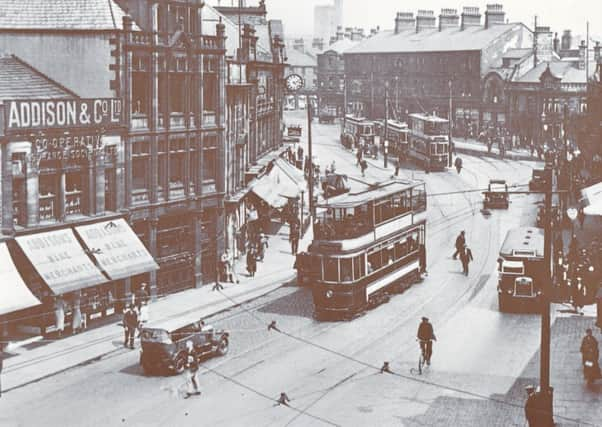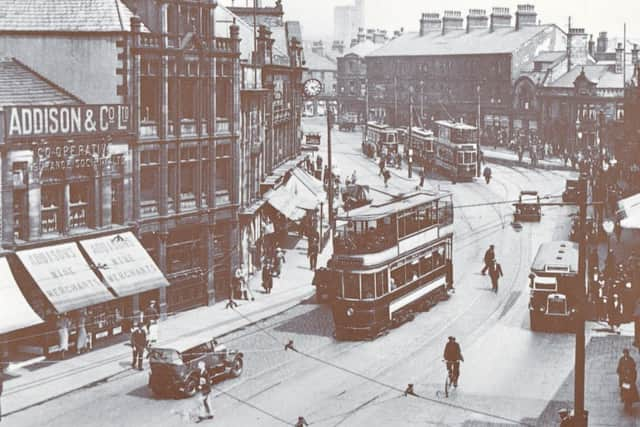Name changes for Burnley’s historic main street


I understand Burnley U3A Local History Group has organised an exhibition, at the Toll House, to coincide with work they are doing at the moment. The theme is “St James’s Street, 1850 to 1950: A Century of Change” and, until September, the exhibition will be open to the public from Saturday to Tuesday from 2pm to 4pm.
Admission is free and all regular readers of this column – and everyone else for that matter – should make every attempt to see the work of Burnley’s excellent branch of the U3A and, of course, there is much else to see at the Toll House and former Wharf master’s House.
Advertisement
Hide AdAdvertisement
Hide AdI ought to state this Retro is not intended to be a real rival to the exhibition. There is much more to see at the Toll House but I felt an exhibition such as this should be supported by the Express.


After all, those of us interested in Burnley’s local history have been making use not only of back copies of the newspaper, but also of the many photos that have been taken by Express photographers and published by the Express over the years.
The paper has played a huge role in the history of the town so I hope its readers turn out in great numbers to see the exhibition.
Over the spring and summer I will, if the U3A agrees, publish in these pages, some of the images used in their exhibition. The ones I have chosen for today are taken not from the Briercliffe Society’s Postcard Collection, my usual archive for these articles, but from the much larger photo collection.
Advertisement
Hide AdAdvertisement
Hide AdIn addition, I should explain the photos on these pages have been chosen as representative of the full length of St James’s Street and over a period of time.
In the past, the street we now know as St James’s Street has had a number of different names. Not many locals realise that, in the early 19th Century, the first hundred yards or so of the street was known as Blucher Street and those who know that have often forgotten who Blucher was.
Gebhard Leberecht von Furst von Wahlstadt (1742-1819) was known as “Marshal Forward”. He was a Prussian field marshal, born in Rostock, Germany, who is best-known for his timely appearance, after a difficult march, at the head of a large army on the field of Waterloo in 1815. His arrival turned Napoleon’s defeat into the French Emperor’s final disaster and some historians claim even more than this for Blucher’s contribution, as Wellington’s ally, at the great battle.
Given his importance at Waterloo it is not surprising the people of Burnley should name part of their principal street after Blucher and it is my opinion it is a great pity we remember his name no more in our town.
Advertisement
Hide AdAdvertisement
Hide AdPerhaps it is because of the Anglo-German rivalry which we recall this year on the 100th anniversary of 1914. However, this rivalry predates the outbreak of the First World War and the name Blucher Street was dropped years before one of the bloodiest of wars commenced.
The low numbers in St James’s Street are at the Hall Street end where the section of the street once known as Blucher Street was located. Not many yards further along, came the Market Place which occupied the wider part of the street between Parker Lane and Manchester Road. Sometimes the address “The Market Place” was used even though the street name appears to have been “St James’s Street”.
Of course, this was Burnley’s second Market Place. The first had been outside St Peter’s Church in the original Market Place in the oldest part of town. There had been a plan to extend the early facility into what is now Ormerod Road, though then it was known as Godley Lane, but that failed and, in the later 18th Century, the Market moved to St James’s Street.
Lower down St James’s Street there was a section of the street known as Goodham Hill, another name we have lost. Goodham Hill occupied the part of St James’s Street beyond Curzon Street in the direction of the river Calder at Bridge End, but, if there was a hill worthy of the name, it must have been only a slight one. There will have been something of a drop in road levels but I suspect those would have greatest nearest the river, where St James’s Street, at one time, was known by yet another name, that of Cheapside, one of two such street names in Burnley.
Advertisement
Hide AdAdvertisement
Hide AdCheapside usually indicates an old trading area often associated with a market and, to some extent, this was the case with the part of St James’s Street once known by that name. There were shops and inns in this area at an early date and, later, there were unofficial markets in this part of town. The fact Burnley once had two Cheapsides is explained by a further fact; the one we have identified was in Burnley but the other, located at the George IV, was in Habergham Eaves.
But, remember, the volunteers, who run the Visitor Centre at the Weavers’ Triangle are looking forward to meeting you and the Burnley branch of the U3A will be pleased to be instrumental in breaking all visitor records at the Weavers’ Triangle.
It is all free, there is plenty to see and, when the centre is open, you can have a cup of tea at the most attractive and historic tea room in town!
Are there any excuses for not getting to the visitor centre this year?
Of course not!